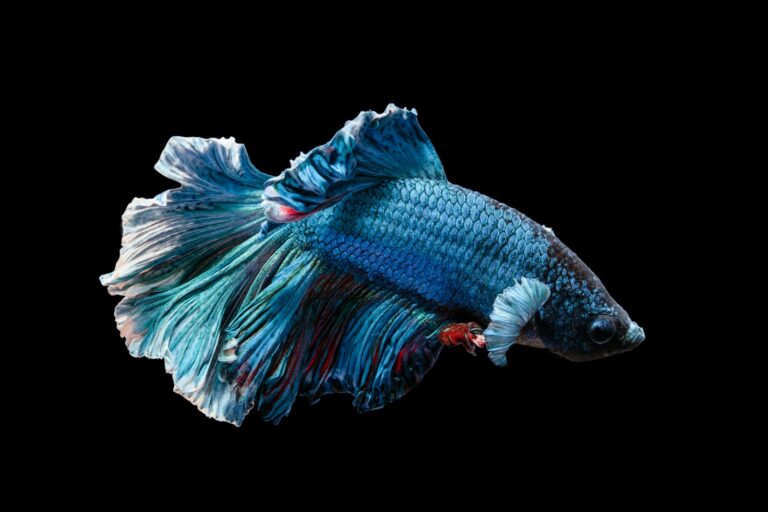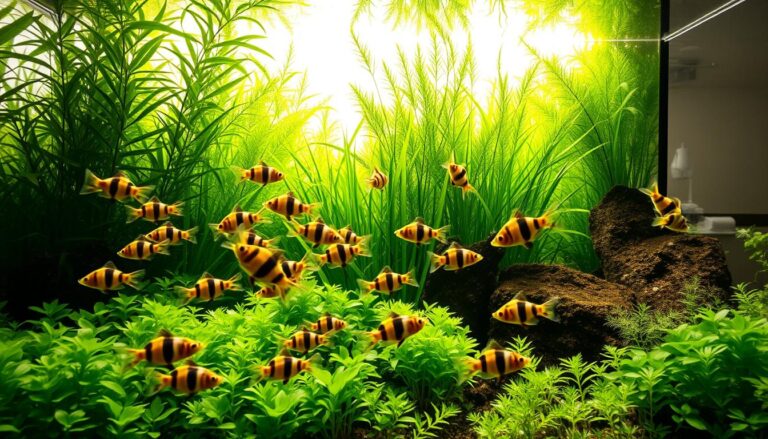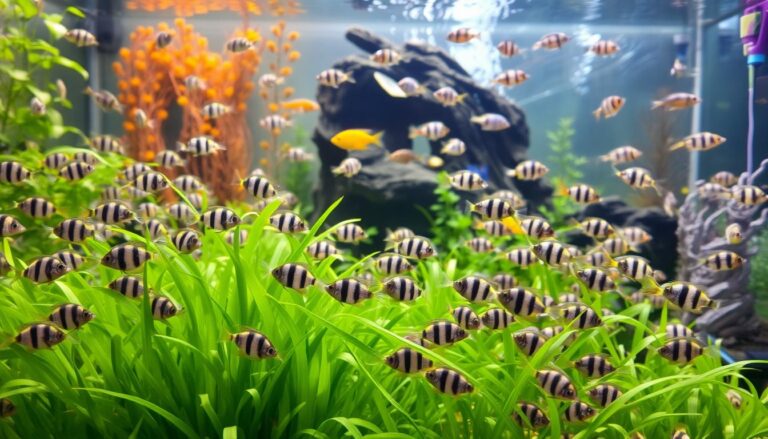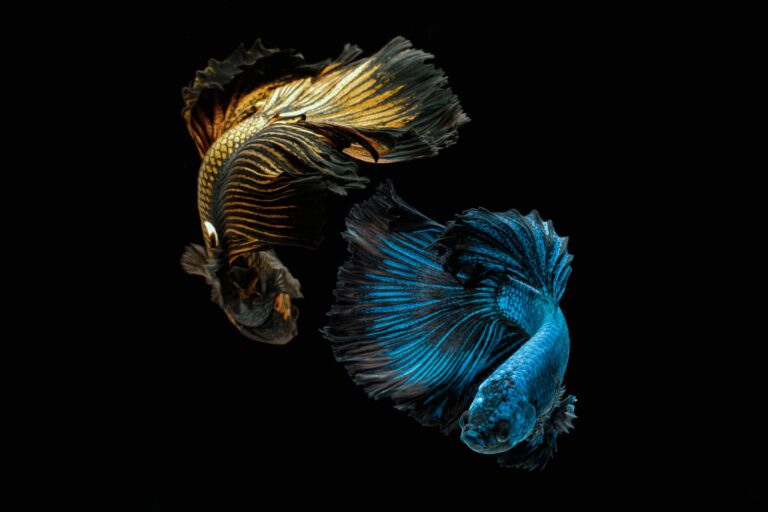Fascinating Betta Fish Types to Explore
Did you know there are over 70 different betta fish types in aquariums and in the wild? They come in vibrant colors and have unique tail shapes. These smart fish are a treasure trove for anyone interested in them.
Whether you’re new to fish keeping or have been doing it for years, this guide is for you. It shows the beauty and variety of these amazing fish.

Table of Contents
Key Takeaways
- Over 70 betta fish types exist, each with unique traits.
- Bright colors and patterns make betta fish types stand out.
- Proper care varies depending on betta fish types.
- Understanding betta fish types helps create ideal tank setups.
- Each species offers different personality traits to explore.
Getting Started with Betta Fish
Betta fish types look different, but they need similar care. Knowing their history and basic needs is key to success.
A Brief History of Betta Fish
Wild betta fish come from Southeast Asian rice paddies. In Thailand, early breeders loved their bright colors and fancy fins. Through years of breeding, we got the betta fish types we see today.
From being fighting fish to being pets, their story shows our love for aquatic beauty.
General Care Tips for Beginners
Starting with the basics is important. Here’s what you need:
- Aquarium size: 1 gallon or bigger for their comfort.
- Gravel or substrate to hold live plants, which clean the water and give them places to hide.
- A filter, like an internal sponge or a powered one, to keep the water clean. Aim for 3-5 tank volume turnovers an hour.
Tap water needs to be dechlorinated. Use products like Nano Complete to remove harmful chemicals. Regular water changes and checking pH levels are crucial. These steps help keep a stable home for all betta fish types.
Exploring Diverse Betta Fish Varieties

Betta fish variations amaze with their bright colors and patterns. Each variety has its own story of genetics and adaptation. They come in bold hues and intricate designs, making each one unique.
Understanding Betta Fish Patterns
Patterns like marble, butterfly, and dragon scale are key to identifying betta fish varieties. Marble bettas change color as they grow. Butterfly bettas have wing-like markings.
Dragonscale bettas have thick, shiny scales that need clean water. Check out patterns to find the right fit for your tank.
Exploring Betta Fish Colors
Colors range from bright solids to soft pastels, each needing special care. Solid-colored bettas keep their color steady. Metallic shades shine because of light reflection.
Albinos need soft light to protect their eyes. Pastel shades show health issues quickly, so watch them closely.
- Albino: Avoid direct light to prevent stress.
- Metallic: Prioritize water quality for scale health.
- Marble: Expect color shifts as they grow.
Knowing these traits helps create a great home for betta fish. Each betta’s look tells you what it needs. Watch their patterns and colors to care for them best.
Understanding Different Betta Fish Types
Betta fish come in many shapes and sizes, each with its own special traits. They are classified by their fins, body shape, and patterns. Let’s explore the most common types you’ll find:
- Halfmoon Betta: Its tail spreads out to 180 degrees, forming a perfect “D” shape.
- Crowntail Betta: Its webbed tail looks like a crown, with spiky edges and less membrane.
- Plakat Betta: It has compact fins and a muscular body, known for its lively and feisty nature.
- Doubletail Betta: It has two separate tails and a sturdy body.
- Veiltail Betta: Its flowing, tear-shaped tails and slender dorsal fins make it a graceful swimmer.
- Elephant Ear Betta: Its large pectoral fins and vibrant scales make it bold and eye-catching.
- Alien Betta: It has bright colors and a wild-type body with unique fin banding patterns.
- Pineapple Betta: It has a yellow body with jet-black edges on its scales, resembling a pineapple.
Each betta fish species has its own unique story. For example, the Pineapple Betta stands out with its striking pattern. Knowing these differences helps you pick the right betta for your tank. Their looks and behaviors are closely linked.
Plakat Bettas need active setups because of their high energy. Crowntails prefer calm waters to protect their delicate tails.
Guide to Choosing Your Betta Fish
Choosing the perfect betta fish means knowing different betta fish types and what fits your life. Each type has its own way of acting and needs. So, picking one that matches your home makes for a happy, healthy pet.

Matching Fish Personalities with Your Lifestyle
- Active swimmers: Betta splendens with long fins love open spaces. These are great if you like watching them move a lot.
- Shy varieties: Short-finned bettas like to hide in plants. Perfect for those who want a calm, easy setup.
- Color-focused breeds: Veiltail and halfmoon bettas are very colorful. Pick these if you care about looks.
Complementary Aquatic Environments
Make tanks that match each betta’s natural way of living. For example:
- Put floating plants in for bettas that like shade.
- Make sure there are open swimming areas for active different betta fish types.
- Use smooth gravel to protect the fins of long-finned bettas.
Learn about each betta’s behavior before buying. Visit pet stores or talk to breeders to see how they act. A betta that fits your home will do well and be happy.
In-Depth Betta Fish Species Overview
Exploring the kinds of betta fish opens a door to a world of scientific diversity. Wild species differ in size, behavior, and where they live. Let’s dive into these unique traits and characteristics.

| Species | Scientific Name | Habitat | Key Traits |
|---|---|---|---|
| Common Betta | Betta splendens | Thai/Malaysian wetlands | Domesticated; bred for vibrant colors and long fins |
| Fighting Fish | Betta coccina | Indonesian streams | Reddish hues; prefers flowing water |
| Pygmy Betta | Betta macrostoma | Borneo peat swamps | Small size; unique mouth structure |
| Extinct Betta | Betta mahachaiensis | Thailand canals | Critically endangered; limited to specific habitats |
- Check fin shape: Wild species often have shorter fins than ornamental breeds.
- Observe body size: Pygmy bettas grow to just 1.5 inches, while others reach 3 inches.
- Note behavior: Some species are schooling fish, unlike their solitary domestic counterparts.
Knowing about these kinds of betta fish helps aquarists choose the right species for their tanks. Wild bettas need special care and setups to live well. Learning about their specific needs leads to healthier, happier fish.
Caring for Your Betta: Essential Tips
Proper care is key for your betta’s health. All types of betta fish need clean water and a suitable environment. Here’s how to keep them in top shape.

Water Care and Optimal Temperature
Keep the water temperature between 78–80°F. Use a heater and thermometer to ensure accuracy. Change 25% of the water weekly to keep it fresh.
Avoid direct sunlight to prevent algae growth.
- Test water weekly for ammonia and nitrite levels.
- Use dechlorinated water to protect their delicate gills.
Feeding and Nutrition Guidelines
Feed small portions daily—2-3 pellets or frozen food. Offer variety to mimic their wild diet. Overfeeding can harm their health. Remove uneaten food in 2 minutes.
Tip: Rotate between high-quality options like brine shrimp and bloodworms. Adjust portions for smaller species like Betta macrostoma.
Consistency is crucial. Stable conditions help all types of betta fish stay vibrant and active. Small adjustments can make a big difference in their well-being.
Betta Fish Patterns and Color Insights
Betta fish colors are a visual language of genetics and nature. Each hue and pattern tells a story of breeding and adaptation. From deep blues to fiery reds, these aquatic beauties captivate with their vibrant displays.
Popular Betta Fish Colors Explored
Key shades like metallic green or pastel orange come from selective breeding. Wild-type colors like dark iridescent still exist in some strains. Here are top favorites:
- Red Dragon Scale
- Copper Sunset
- Steel Blue Marble
- Purple Orchid
Decoding Intricate Betta Fish Patterns
Patterns like marble, butterfly, and butterfly tail define their identity. Observe:
- Marble patterns: Swirls of contrasting colors
- Cellophane effect: Translucent fins revealing body hues
- Crowntail fins: Extended rays creating lace-like edges
Genetic variations create unique combinations. A Half-Moon Tail paired with royal blue scales shows how patterns enhance betta fish colors. Breeders often focus on balancing aesthetics with health traits.
Innovative Ideas for Betta Fish Tanks
Creative tank setups can make betta fish patterns stand out while keeping them healthy. Pick decorations that show off their colors. Use floating plants like Java moss for natural hiding spots. Driftwood arches or ceramic caves add texture, making their scales pop against dark backgrounds.
- Live plants: Anubias or Amazon swords provide vibrant contrast.
- Colorful gravel: Light-colored substrate enhances fin details.
- LED lighting: Soft hues can subtly complement their betta fish patterns.
| Item | Benefit |
|---|---|
| Transparent ornaments | Showcase betta fish patterns without blocking views. |
| Layered backgrounds | Patterns on tank walls create dynamic visual interest. |
Think about adding silk vines or artificial coral to mimic natural habitats. Smooth stones arranged in clusters give them spaces to explore. Always check that decorations are safe—rounded edges prevent fin damage. Mix elements to balance looks and function, letting their unique betta fish patterns shine.
Improving Betta Fish Wellness
Ensuring betta fish thrive starts with thoughtful planning. A balanced environment and mindful care create the foundation for long-term health. Let’s explore how small adjustments can make a big difference.
Creating a Healthy Habitat
Each betta fish varieties has unique needs. Start by selecting a tank at least 5 gallons. Add gentle plants like java fern for natural shelter.
Maintain water temperatures between 76°F and 82°F, using a heater for stability. Weekly water changes (25-30%) keep ammonia levels low. Consider the fish’s natural habits—wild betta fish varieties often favor calm, planted spaces.
Stress Reduction Techniques for Betta Fish
Reduce stress through simple steps:
- Provide hiding spots with ceramic caves or driftwood.
- Avoid bright lights; use soft LED lighting.
- Minimize tank activity—keep bettas alone or with peaceful tank mates like cherry shrimp.
Watch for fin twitching or loss of appetite as stress signs. Offer varied foods like brine shrimp to stimulate interest. Regular gentle water sprays on the tank surface boost oxygen without startling them.
Troubleshooting Common Betta Fish Care Issues
Betta fish can show stress or illness signs, even with good care. Spotting problems early is key to their health. Here’s how to tackle these challenges.
Identifying Signs of Stress
Bettas often hide or swim less when stressed. Watch for these signs:
- Clamped fins (fins held tight to the body)
- Loss of appetite or floating uneaten food
- Rapid gill movement or erratic swimming
Preventing Disease in Betta Fish
Regular care can prevent most health issues. Follow these steps:
- Test water weekly with API Freshwater Master Test Kit. Aim for ammonia/nitrite at 0 ppm.
- Quarantine new fish for 2–3 weeks before adding to the tank.
- Feed high-quality pellets like Hikari Betta Bio-Gold twice daily.
- Replace 25% of water weekly using dechlorinated water.
| Common Issues | Solutions |
|---|---|
| Fin Rot | Improve water quality; use Melafix |
| Ich (White Spot Disease) | Raise tank temperature to 80°F and add aquarium salt |
| Lack of Appetite | Check water parameters and offer live foods like brine shrimp |
Quick action and regular checks keep bettas healthy. Small changes can make a big difference in their well-being.
Conclusion
Betta fish are truly captivating with their bright colors and detailed patterns. To keep them happy, you need to create a balanced home for them. This means focusing on water quality, their diet, and making sure they’re not stressed.
Look for different types of betta fish through trusted sources. This will help you find the perfect one for your tank. Keeping their tank clean and at the right temperature is key. Whether you like a lot of plants or a simple setup, their health depends on your care.
Join aquarium communities or follow guides to learn more. By paying attention to their needs, you’ll enjoy their lively presence. Learning about different betta species and sharing what you know with others is rewarding. Every decision you make helps keep them healthy and happy for many years.
FAQ
What are the different betta fish types?
There are many betta fish types, like Betta splendens and Betta imbellis. Each type has its own look and care needs. They make great pets because of their diversity.
How can I identify various betta fish patterns?
To spot different betta fish patterns, look at their fins and colors. You’ll see patterns like butterfly and marble. These patterns with colors create amazing sights.
What are the most popular betta fish colors?
Blue, red, green, and purple are top betta fish colors. Some bettas show off multiple colors or shine. Each color tells you about the betta’s type.
What types of betta fish are suitable for beginners?
Beginners should start with Betta splendens, also known as Siamese fighting fish. They’re easy to care for and colorful. They fit well in common aquariums.
How do the various betta fish variations affect their care?
Each betta fish type needs its own care, like the right water and tank size. Knowing these needs helps keep your betta happy and healthy.
Can I keep different kinds of betta fish together?
It’s best not to mix different betta fish because they can fight. Keeping one betta or a special group might be safer.
What should I consider when choosing between betta fish species?
Think about the betta’s personality, tank size, and water needs. Learn about each species to pick the best one for your home.







